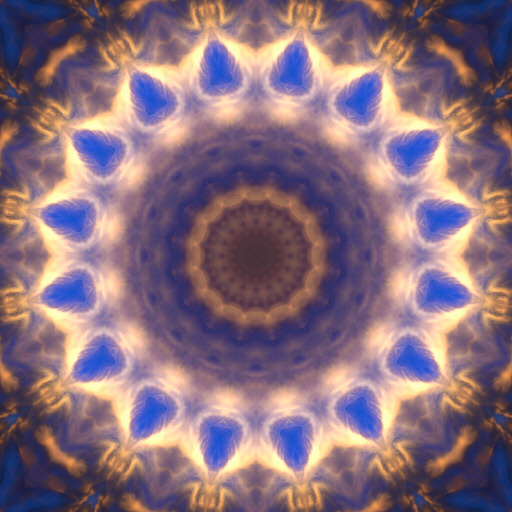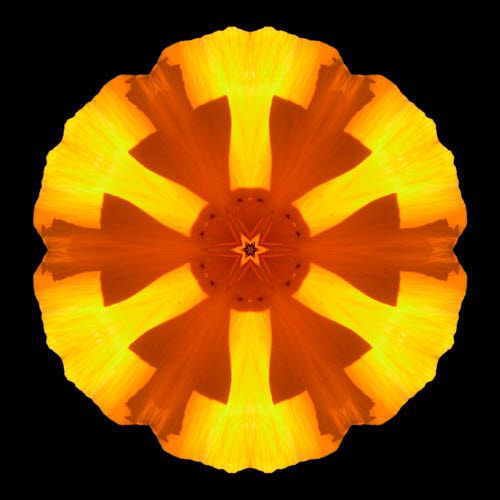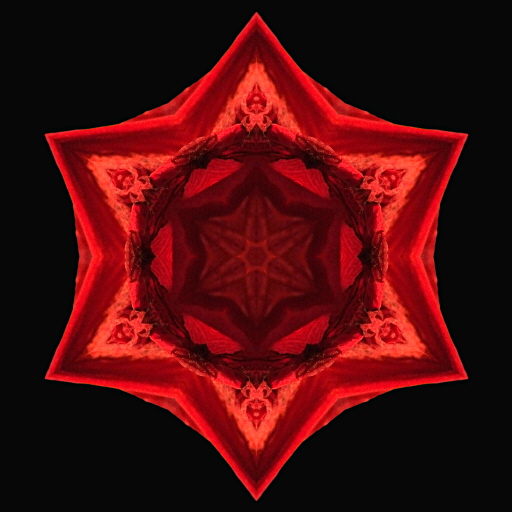
Sun Wheel I mandala
In some ways my experience of the heart of Beliefnet has been tangential. Focused mainly on art and healing, I have paid less than full attention to the remarkable phenomonen of Beliefnet itself and it’s intermixing of so many spiritual paths.
No more!
This is a little story of where I’ve been and where I think I’m going, spiritually. I’d be grateful to hear from others about their own journeys.
Although I was raised Jewish, I have not been active in that faith since my Bar Mitzvah. Growing up Jewish in a mostly non-Jewish community, where Judaism was largely ignored and sometimes scorned, led me to becoming an alienated Jew who, at an early age, wished he could be something else. (My mother once told me that I came home from Kindergarten one December day and declared, “I’m not Jewish, I’m Christmas!) It must have been cushing to see, as the years passed, that I couln’t be “Christmas” no matter how hard I tried.
So, if I couldn’t be “Christmas,” and Judaism did not satisfy me, I needed to become something else. But the only religions I was exposed to in my home town near Buffalo, NY, were Judaism and Christianity. Unable to find my way into either, in my teenage years I drifted into agnosticism and what I see, in retrospect, as a sense of spiritual isolation.
That began to change in college, where I was exposed to the radical inversion of Judeo-Christianity in William Blake’s “The Marriage of Heaven and Hell,” a poem which began my lifelong quest for a spiritual practice and a spiritual home. I soon found Buddhism, Hinduism, and Sufism; learned Transcendental Meditation; sought draft counseling from the Quakers and briefly attended their meetings; visited Unitarian churches; and attempted to find some personal connection to communities that practiced in these traditions. Yet, nothing seemed quite right, and by my early 20s my spiritual quest had reached what felt like a dead end. I retreated, again, to a vaguely spiritual kind of agnosticism. And, again, to a sense of spiritual isolation.
My near-death experience at 41 put me back on a spiritual quest, and with much more urgency. I found that the “me” I was before my brush with death was not quite the “me” I was afterward. It’s hard to summarize the changes. Some of them were transitory. For the first several months, I felt possessed of a powerful energy I had never experienced before. I knew who was calling when the phone rang, and letters with infrequent correspondents crossed in the mail. I felt as if I literally had a power I could direct with my hands, like bolts of electricity issuing forth from my palms and fingers. As I became increasingly involved in the activities of daily life, however, this psychic sense gradually faded.
Other changes seem to have become a permanent part of my character. One, common to almost all near-death experiencers I have met, is that I no longer fear death itself. Although mine wasn’t one of the blissful near-death experiences I have since read about, neither was it at all frightening; it was, rather, by far the calmest moment of my life, deeply centering. I also returned with a sense of purpose, of living on borrowed time that I had better make the most of. Just prior to blacking out, I had seen a series of line charts in my mind, each one representing how close to my true path I had been in all the major areas of my life. At the moment of blacking out, I saw on each of these charts a break, followed by an upward trend moving into the future. I was flooded with a sense that I knew what to do with my life, at last, and hoped for a chance to complete it.
The path I envisioned 15 years ago has been much more complex than I imagined it to be in that moment, and much more difficult, but it has led me to re-discovering myself as a photographer and thinking of myself as an artist; to redirecting my vocation to healing; and to actively searching for a spiritual practice and community. I have been on retreats with Thich Nhat Hanh, have attended weekly Unitarian services, have revisited Judaism in various forms, have received a Sufi name and practiced Wazifas, and have studied the works of several teachers of various other branches of the world’s religions. Yet I have not been able to find one place that feels like home. Always there is a foreign part I can’t relate to, much like the Hebrew I listened to, uncomprehendingly, on Saturday mornings as a child. Or there is a sense of not-quite-fitting, of being the ugly duckling.
Until now.
Recently, my psychotherapy mentor, a man who for 45 years has been studying most of the world’s great religions, has begun to integrate teachings from all these wise traditions into a single forum. He has created a spiritual teaching center where any and all of the spiritual teachings of humanity can find a home. This feels right, to me. Although it goes against the oft-repeated notion that “the man who chases two rabbits catches none” — the idea that one must, as I was recently told by a Lama from California, choose one path and one teacher — I feel a kinship with this group of spiritual seekers unlike anything I have felt before. There are, I have felt for decades, many paths up the mountain, but it is the same mountain.
This is, to me, the beginning stage of a true spiritual integration.
I believe that the spiritual landscape is changing, much as the racial landscape has changed, perhaps forever, with the election of a mixed-race President. For many years, there has been a global interchange of religions and spiritual traditions. The West has been flooded with the influences and traditions of the East, as in the prior several centuries the West brought (and sometimes forced) it’s traditions on the East. Meditation and Yoga, for instance, have become part of our mainstream, and with these practices came many of the teachings that accompanied them. Through modern media — radio, television, and now especially the Internet — we have all, everywhere, the opportunity to be exposed to the accumulated wisdom of humankind. We are not limited to the traditions in our neighborhood or village, or of our forefathers. We live in the Global Village that Marshall McLuhan predicted in the early 60s, and we can learn from all of its teachers, everywhere.
Beliefnet, it now occurs to me, is a big part of this intermixing, a place within the Global Village where not only can anyone find a spiritual home, but also where we can visit all the other neighborhoods and, in so doing, achieve spiritual enrichment unattainable until the present moment.
So. That’s where I’m at in my spiritual quest. I’ll keep you posted on future developments and, I hope, you’ll do the same.
More anon,
David
Discussion:
Spiritual Questing, Near-Death Experiences, and the Global Village
Art, Healing, and Transformation group
Flower Mandalas Project group
Cultivating Creativity group
Request the 15 Flower Mandalas screensaver: Fifteen Flower Mandalas
© 2008, David J. Bookbinder
More from Beliefnet and our partners

